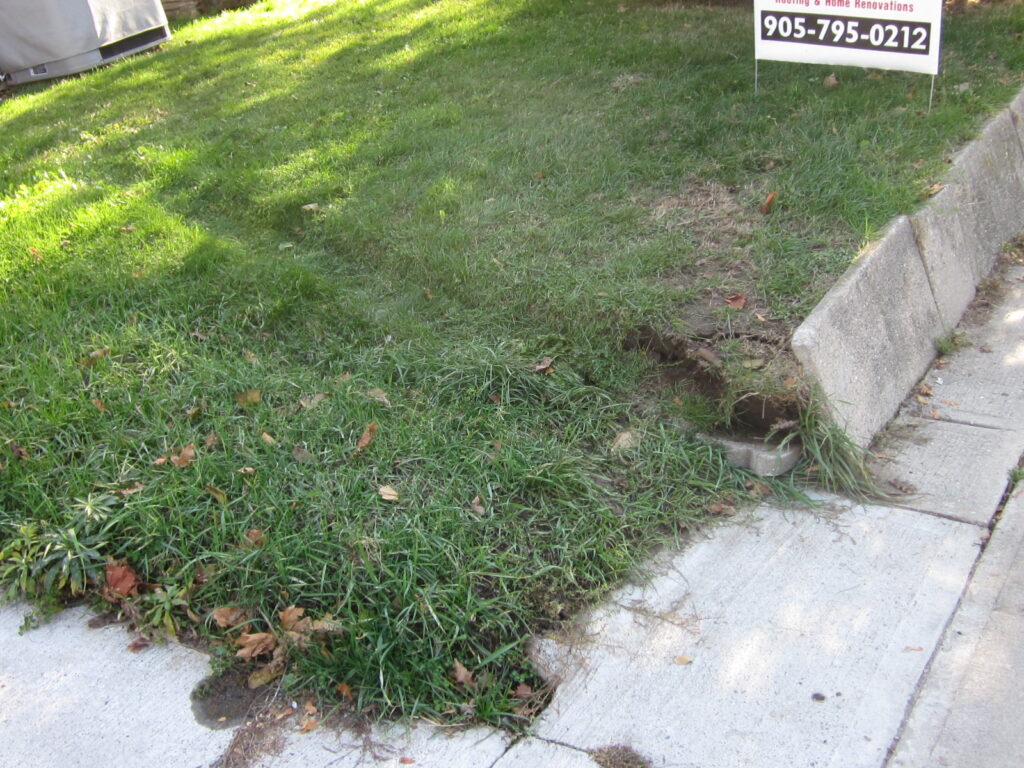
A disposal bin full of industrial waste sat on a portion of my lawn in west end Toronto, during the warm spell we had from november 3-9, with the tires creating an eight foot long, 3 inch deep impression. Since it was after the frost, and the lawn wasn’t great in beginning, is there anything that I should address immediately? The closer unattractive grass was originally cement, and I didn’t replace it with lawn, since I wanted to mirror my neighbour’s native plant portion, but it was dropped from my ever-lengthening “to do” list.
I thought of uprooting the lawn at some point, but landscaping isn’t a priority yet with some critical reno loose ends to deal with.
Thanks for contacting the Toronto Master Gardeners. The best time to repair ruts in a lawn is when the grass is growing most strongly. Depending on the type of grass, this will be either in the late spring or early fall. It’s also best to fix ruts as soon as possible after they occur. In your case, given the time of year, my suggestion is to wait until the spring before doing anything with this rut. At that point you can assess whether to make fixing this rut part of an overall lawn renovation, or tackle the rut on its own.
Fixing the rut should be fairly straightforward. The most important consideration is that the soil in the rut has been compacted and needs to be loosened to allow water, air and nutrients to penetrate deeper into the soil in order to produce stronger roots. From your picture it looks like there is still grass in the rut, so if it is still no more than about 4 inches deep in the spring, fixing it might be as simple as lifting the turf in the rut with a spade or digging fork until it is an inch or two above the surrounding turf then giving the soil some time to settle until it is level with the neighbouring grass. If the rut is more than 4 inches deep, cut the turf in the rut into a strip with an edger, loosen the soil at the bottom of the rut, fill with a 50/50 mixture of topsoil and compost, and replace the turf so that it sits an inch or two higher than the surrounding turf or reseed. If there is no grass in the rut, loosen the soil with a digging fork, then fill the rut with a 50/50 mixture of topsoil and compost to an inch or two above the surrounding turf and reseed.
Here are a couple of links about seeding and maintaining a lawn that might be helpful:
https://landscapeontario.com/sowing-grass-seed

